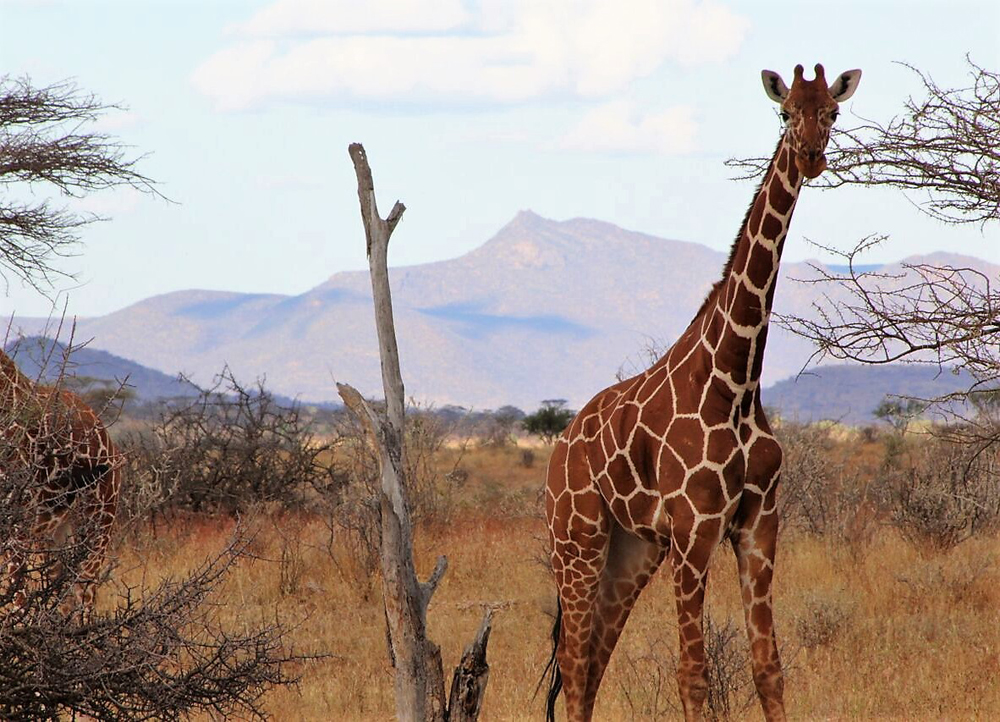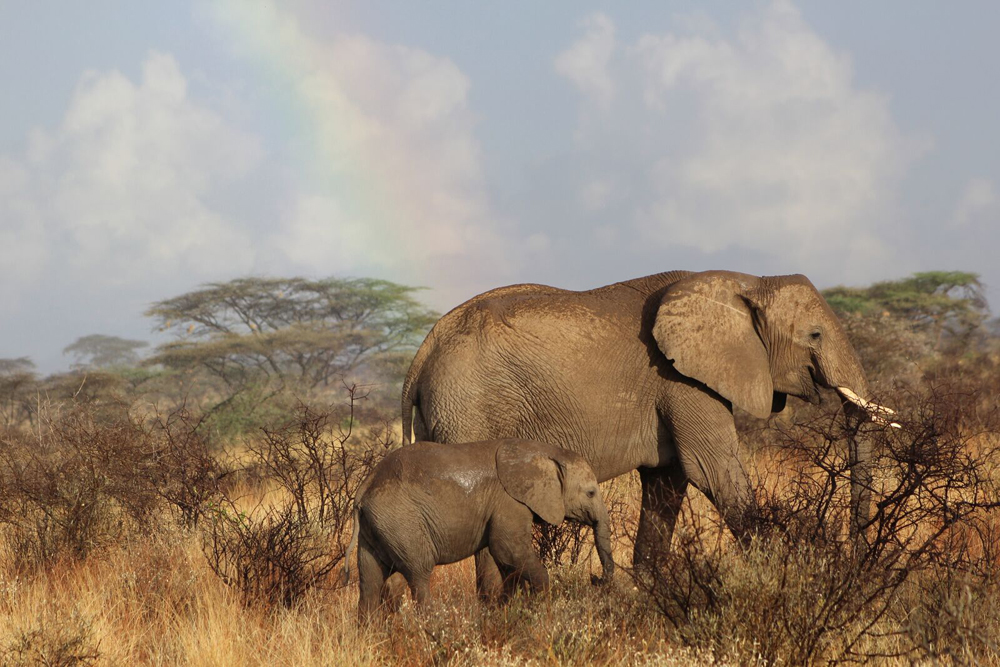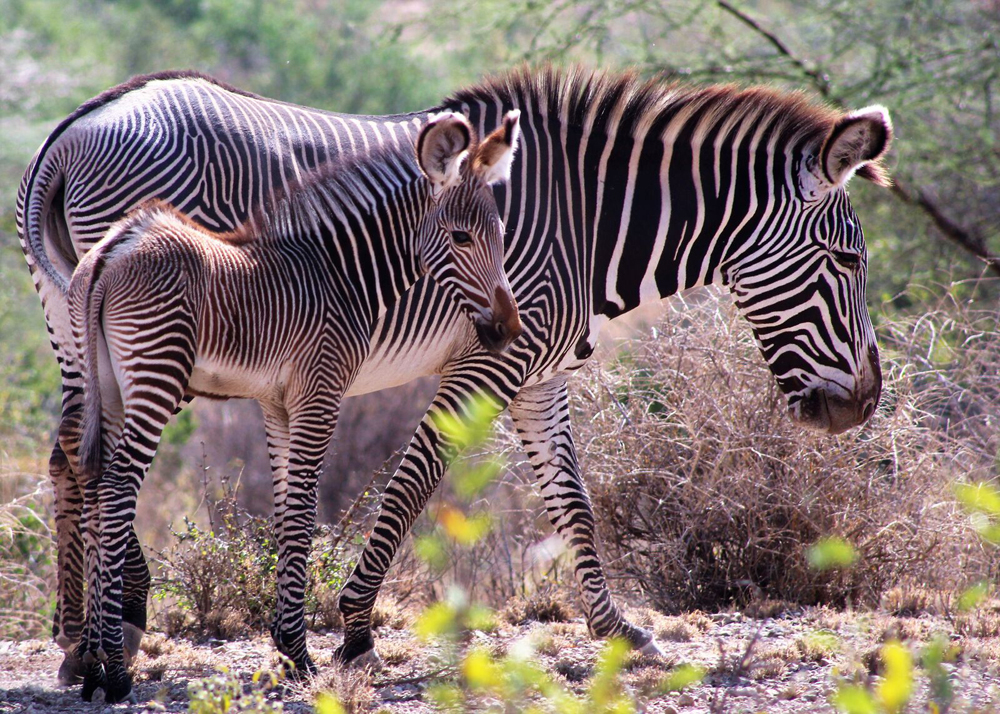Welcome to our Inaugural Annual Photo Essay of Kenya’s Wildlife. After taking hundreds of wildlife photos over the years, I decided to dig into my archives of photographs and pick my top shots of Kenya’s magnificent wildlife.
Walk with me through the unspoiled natural beauty of Lake Nakuru National Park (located on the floor of the Great Rift Valley) and Samburu Game Reserve (protected land in the high desert near Mt. Kenya) where we take our guests on our tour.
Last July, as we headed out for a morning safari, one of our guests asked our driver, George, “What do you think we will see today?” He turned wistfully towards her with a smile and said, “Whatever Mother Nature decides”.
Here are some of her gifts.

Breathtaking pink flamingoes walk on the shorelines of glistening Lake Nakuru and are within arms’ reach. The Nakuru National Park (a 3-hour drive west from Nairobi) hosts over 450 bird species. Because of recent climate change, water levels have shifted forcing these pink wonders to migrate to other nearby lakes for food supplies.

Nakuru National Park has about 70 white rhinos, otherwise known as square-lipped. They are one of the five species of rhinos that still exist. It has a wide mouth used for grazing and is the most social of all rhino species. We saw a handful of these ancient creatures set against the backdrop of dancing pink flamingoes on a balmy morning safari.

The Samburu Game Reserve is home to the “reticulated” giraffe, also known as the Somali giraffe and is only found in this part of the country. There are only 9,000 remaining, so conservationists are working with local Pastoralists to be Twiga Walinzi (Giraffe Guards) to prevent poaching, create tracking systems, care for orphaned giraffes and educate the public. These giraffes have extremely good eyesight and can spot a human from a mile away!

You can tell this mother and her calf are African, not Indian elephants, because their ears resemble the shape of the continent. These two were meandering across the scrub desert after an afternoon rain in the Samburu Game Reserve. These gentle giants really care for one another – sometimes better than we do as humans. They are clever, intelligent creatures with deep family ties and mourn their dead. Between 2007 – 2014 there was a 30% decrease in their population driven mostly by an insatiable ivory trade. China is the end destination for 70% of illegal ivory. Thanks to the political will of the Kenyan government, poaching in Kenya is now relatively under control.

The Samburu Game Reserve is the only park in Kenya that hosts the Grevy Zebra. Here, mother and foal, out for a morning stroll, paused just long enough for me to grab a shot. Their sleek coat pattern has black and white stripes that are much narrower than the plains zebra. Numbers of Grevy’s Zebras plummeted in the 70’s when their coat became prized in the international fashion industry, dropping the population from 15,000 to 2,500 today. Again, thanks to the enforcement of severe protective laws in Kenya, the decline has stopped.

Strutting across the vast savannah of the Samburu Game Reserve I spotted this female Somali ostrich off in the distance. She saw our jeep,didn’t flinch for a second and kept her stride. The male (right behind her) is dark blue-black with white plumage which is why this particular sub-species of ostrich is also called the blue-necked ostrich. It is a large flightless bird native to the Horn of Africa.
